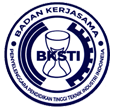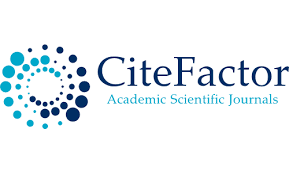Root Causes of Brake Caliper Problems as A Corrective Action in Front of LH: A Case Study in Manufacturing Industry
Abstract
Keywords
Full Text:
PDFReferences
Arnina, P. (2016). Langkah-Langkah Efektif Menyusun SOP. Huta Publisher.
Bachhav, R. M. (2016). Lean Manufacturing Process–A Review. International Journal of Innovative Research in Science and Engineering, 2(01), 99-108.
Bhattacharya, J., Pharmaceutics, M. P., & Hrm, M. B. A. (2014). Root Cause Analysis–A Practice to Understanding and Control the Failure Management in Manufacturing Industry. International Journal of Business and Management Invention, 3(10), 12–20.
Bluvband, Z., & Grabov, P. (2009). Failure analysis of FMEA. 2009 Annual Reliability and Maintainability Symposium, 344–347. DOI. 10.1109/RAMS.2009.4914700
Cheng, S. W., & Thaga, K. (2006). Single variables control charts: an overview. Quality and Reliability Engineering International, 22(7), 811–820. Doi. 10.1002/qre.730
Dahlgaard, J. J., Khanji, G. K., & Kristensen, K. (2008). Fundamentals of total quality management. Routledge. DOI. 10.4324/9780203930021
Ferdousi, F. (2009). An Investigation of Manufacturing Performance Improvement through Lean Production: A Study on Bangladeshi Garment Firms. International Journal of Business and Management, 4(9), 106–116. DOI. 10.5539/ijbm.v4n9p106
Gasperz, V. (2005). Total Quality Management (Terjemahan). Jakarta. PT. Gramedia Pustaka Utama. DOI.
Isniah, S., Hardi Purba, H., & Debora, F. (2020). Plan do check action (PDCA) method: literature review and research issues. Jurnal Sistem Dan Manajemen Industri, 4(1), 72–81. DOI. 10.30656/jsmi.v4i1.2186
Keyser, R. S. (2021). Lean at Home: Applying RCA Techniques to Home Projects. Journal of Applied Research on Industrial Engineering, 8(2), 104–115. DOI. 10.22105/jarie.2021.263716.1234
Kuswardana. (2017). Analisis Penyebab Kecelakaan Kerja Menggunakan Metode RCA ( Fishbone Diagram Method And 5 – Why Analysis ) di PT . PAL Indonesia. Conference on Safety Engineering and Its Application, 141–146.
Okes, D. (2009). Root Cause Analysis. American Society for Quality. Quality Press. Milwaukee, USA.
Oprime, P. C., Lizarelli, F. L., Pimenta, M. L., & Achcar, J. A. (2019). Acceptance X-bar chart considering the sample distribution of capability indices, C ˆ p and C ˆ pk: A practical and economical approach. International Journal of Quality & Reliability Management. DOI. 10.1108/IJQRM-11-2017-0239
Pinto, M. J. A., & Mendes, J. V. (2017). Operational practices of lean manufacturing: Potentiating environmental improvements. Journal of Industrial Engineering and Management, 10(4 Special Issue), 550–580. DOI. 10.3926/jiem.2268
Prabowo, R. F., & Aisyah, S. (2020). Poka-Yoke Method Implementation in Industries: A Systematic. Journal of Industrial Engineering and Management, 1(1), 12-24. DOI. 10.22441/ijiem.v1i1.8803
Purba, H H, & Aisyah, S. (2017). Quality improvement and lean six sigma: Meningkatkan kulitas produk dan kinerja perusahaan menuju zero defect. Expert, Yogyakarta, Indonesia.
Purba, Humiras Hardi, Mukhlisin, & Aisyah, S. (2018). Productivity improvement picking order by appropriate method, value stream mapping analysis, and storage design: A case study in automotive part center. Management and Production Engineering Review, 9(1), 71–81. DOI. 10.24425/119402
S. Wijaya, F. Debora, G. Supriadi, & I. Ramadhan. (2019). A Framework of e-Kanban System for Indonesia Automotive Mixed-Model Production Line. International Journal of Science and Research, 8(6), 2109–2117. DOI. 10.21275/ART20198943
Schulz, G. (2014). The Importance of Effective Root Cause Analysis of Failures in High Reliability Microelectronics Applications: A Case Study. International Symposium on Microelectronics, 2014(1), 493–499. DOI. 10.4071/isom-WA45
Tanner, J. (2020). Agile FRACAS in production manufacturing. Proceedings - Annual Reliability and Maintainability Symposium, 2020 - Janua. DOI. 10.1109/RAMS48030.2020.9153660
Taufik, D. A. (2020). PDCA Cycle Method implementation in Industries: A Systematic Literature Review. IJIEM - Indonesian Journal of Industrial Engineering and Management, 1(3), 157. DOI. 10.22441/ijiem.v1i3.10244
Tomić, B., & Brkić, V. S. (2011). Effective Root Cause Analysis and Corrective Action Process. Journal Of Engineering Management And Competitiveness (Jemc) Mihajlo Pupin, 1(12), 16–20. http://www.tfzr.uns.ac.rs/jemc
DOI: http://dx.doi.org/10.22441/ijiem.v5i2.22021
Refbacks
- There are currently no refbacks.

This work is licensed under a Creative Commons Attribution-NonCommercial 4.0 International License.
IJIEM - Indonesian Journal of Industrial Engineering & Management
Program Pascasarjana Magister Teknik Industri Universitas Mercu Buana
Kampus Menteng - Gedung Tedja Buana, Floor 4th
Jl. Menteng Raya No. 29 Jakarta Pusat- Indonesia
Tlp.: +62 21 31935454 Fax: +62 21 31934474
http://publikasi.mercubuana.ac.id/index.php/ijiem
Email: [email protected]

This work is licensed under a Creative Commons Attribution-NonCommercial 4.0 International License.
The journal is indexed by:





1.png)
.png)
.png)
.png)







